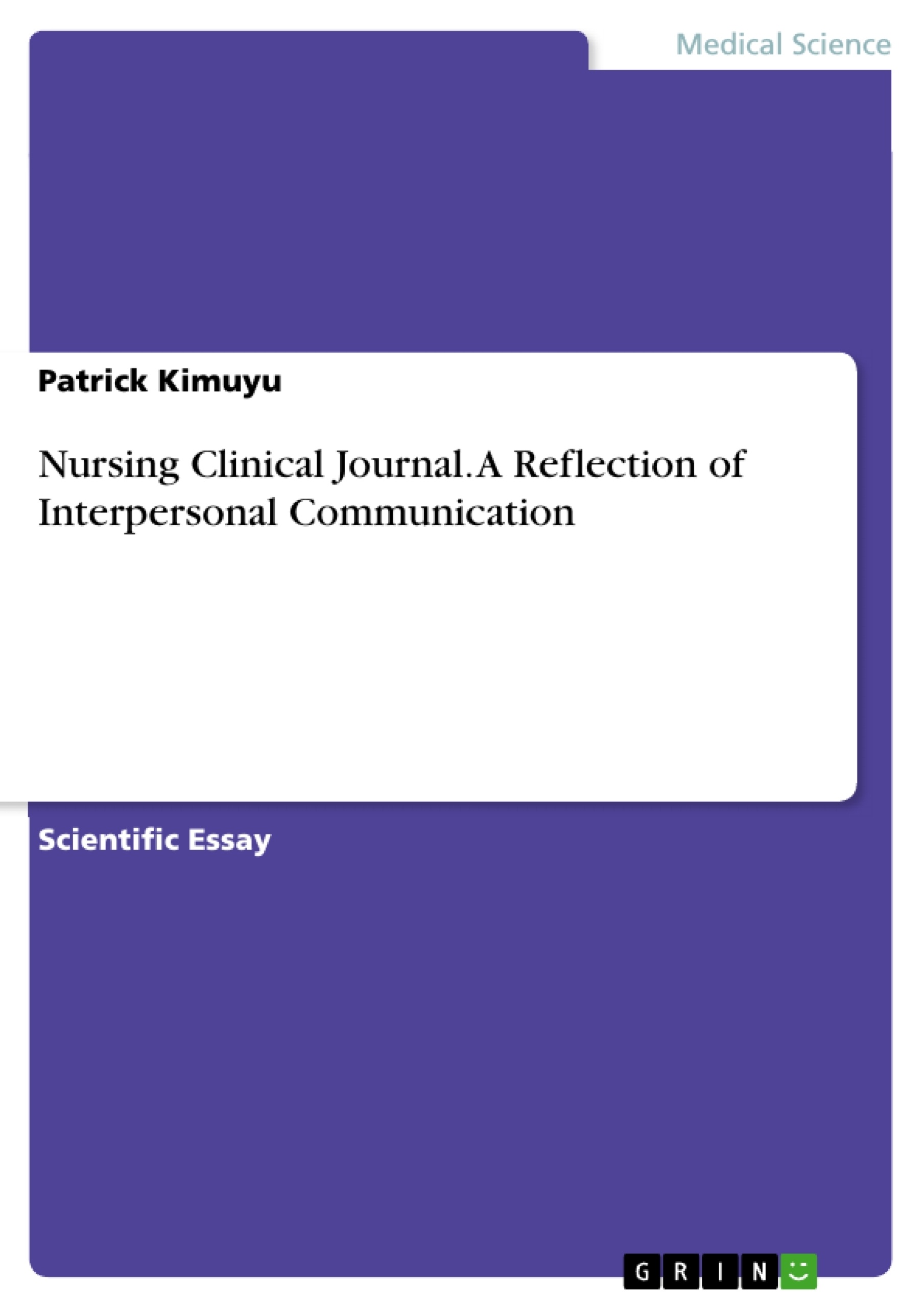Communication in the nursing practice is considered the most important element in providing effective nursing care to patients. This is so because; good communication ensures coordination among nurses and co-workers, as well as other healthcare professionals involved in the patient’s treatment and care. However, it is worth noting that, communication among nurses in the hospital setting encompasses several challenges. This aspect is reaffirmed by most leaders in the nursing profession. For instance, Anderson (2013) remarks “Communication in [the] nursing profession can be a complicated process, and the possibility of sending or receiving incorrect messages frequently exists (par. 2). Therefore, this clinical journal will provide an overview on communication in my workplace; Med/Surge and Detox/Psychiatric unit in a hospital located at NYC where I have been working for nine years.
Table of Contents
- Communication in Nursing
- Communication in the Nursing Practice
- Formal Communication Methods
- Informal Communication Methods
- Barriers to Communication
Objectives and Key Themes
This clinical journal provides an overview of communication practices in a hospital setting, focusing on the Med/Surge and Detox/Psychiatric units. It analyzes communication methods used in the nursing profession, emphasizing the importance of clear and effective communication for patient care and overall clinical outcomes.
- Effective Communication in Nursing
- Formal and Informal Communication Methods
- The Role of Documentation in Patient Care
- Challenges and Barriers to Effective Communication
- Strategies for Improving Communication in the Nursing Profession
Chapter Summaries
The paper begins by introducing the significance of communication in the nursing practice, emphasizing its role in coordinating care among healthcare professionals and ensuring patient safety. It then examines various communication methods employed in the hospital setting, including formal methods like patient reports, medical guidelines, and regulatory policies, and informal methods such as verbal discussions, electronic communication, and mobile texting. The text also highlights the importance of documentation and structured reporting formats for improving communication and supporting patient care. Lastly, it explores potential barriers to effective communication, including the use of gestures, lack of appropriate technology, and an unfavorable working environment, and offers recommendations for mitigating these barriers.
Keywords
This work focuses on the key concepts of communication in the nursing profession, exploring different communication methods, the significance of documentation in patient care, and challenges faced by nurses in effectively communicating with patients, colleagues, and other healthcare professionals. It also examines the importance of maintaining confidentiality, utilizing appropriate technology, and fostering a positive work environment for effective communication and patient outcomes. Key terms include communication skills, formal and informal communication methods, documentation, electronic health records, continuing medical education, and barriers to communication.
- Quote paper
- Patrick Kimuyu (Author), 2018, Nursing Clinical Journal. A Reflection of Interpersonal Communication, Munich, GRIN Verlag, https://www.grin.com/document/388312



